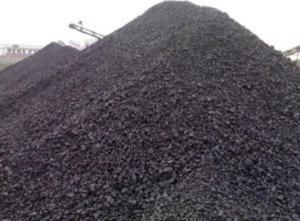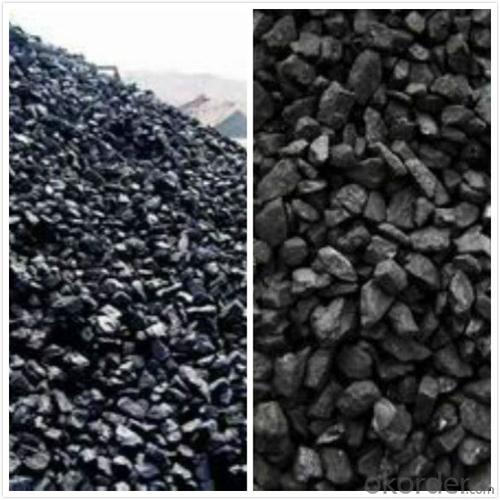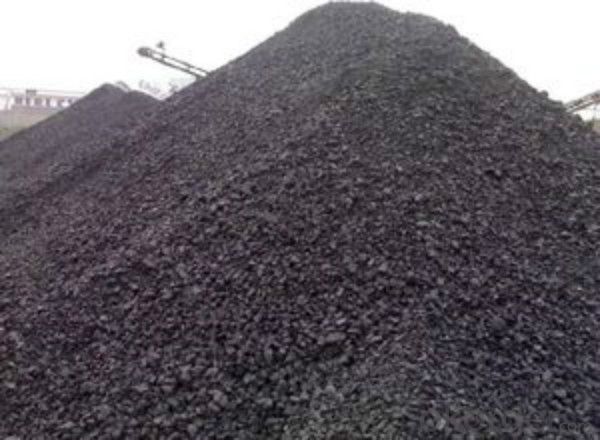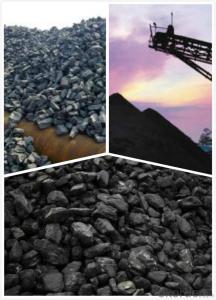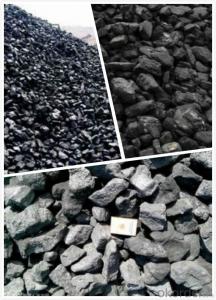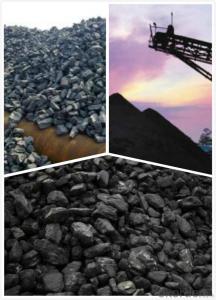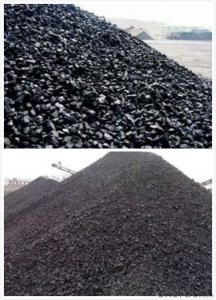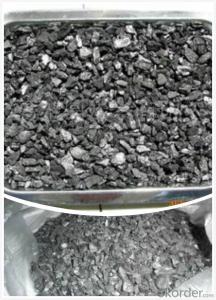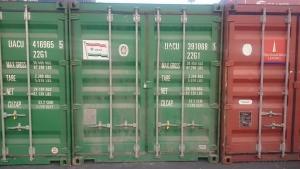Foundry Coke of China Supplier for Furnace Charge
- Loading Port:
- Qingdao
- Payment Terms:
- TT OR LC
- Min Order Qty:
- 2000 m.t
- Supply Capability:
- 10000 m.t/month
OKorder Service Pledge
OKorder Financial Service
You Might Also Like
Product Description
Foundry Coke is a kind of main raw materials used for steel making.
The coke handled by our couporation is made from superior coking coal of Shanxi province. Provided with the dvantages of low ash, low sulphur and high carbon.Our coke is well sold in European,American,Japanese and South-east Asian markets. Our owned Coke plant are located in Shanxi Province and supplying of you many kinds of coke.
Features
This is a special coke that is used in furnaces to produce cast and ductile iron products. It is a source of heat and also helps maintain the required carbon content of the metal product. Foundry coke production requires lower temperatures and longer times than blast furnace coke.
Specification
Fixed Carbon | Sulphur Content | Moisture | V.Matter | Ash |
86%min | 0.7%max | 5%max | 1.2%max | 12%max |
88%min | 0.65%max | 5%max | 1.5%max | 10%max |
85%min | 0.8%max | 15%max | 2%max | 13.5%max |
Size: 60-90mm,90-120mm,120-150mm,150-180mm and so on.
Pictures

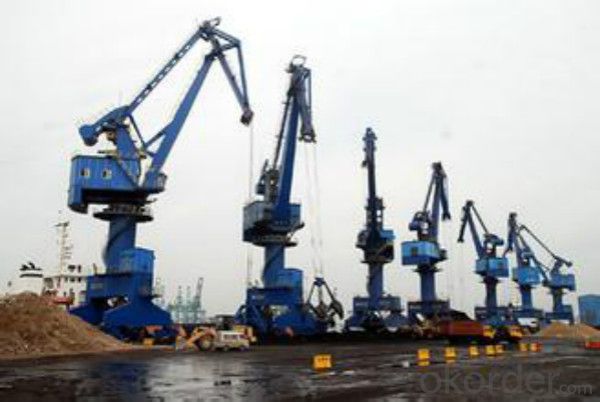
FAQ:
1 How long can we deliver the cargo?
Within 30 days after receiving the LC draft or down payment
2 Time for after-sales?
1 year.
- Q: What is carbon neutral shipping?
- The concept of carbon neutral shipping involves offsetting or balancing the carbon emissions produced during the transportation of goods by sea, air, or land. Its goal is to minimize the environmental and climate impact of shipping. Shipping contributes to greenhouse gas emissions by burning fossil fuels, primarily heavy fuel oil in ships' engines. This releases carbon dioxide (CO2), nitrogen oxides (NOx), sulfur oxides (SOx), and particulate matter into the atmosphere, contributing to global warming and air pollution. To achieve carbon neutrality in shipping, different strategies can be used. One common approach is carbon offsetting, which involves investing in projects that remove or reduce an equivalent amount of CO2 from the atmosphere. This can include reforestation, renewable energy projects, or methane capture initiatives. By supporting these projects, shipping emissions are balanced out, resulting in a net-zero carbon footprint. Another way to achieve carbon neutrality is by using alternative fuels and energy-efficient technologies. Biofuels, hydrogen, and electric propulsion systems can significantly reduce or eliminate carbon emissions from ships. Optimizing shipping routes and vessel design can also reduce fuel consumption and emissions. Collaboration between shipping companies, governments, and international organizations is crucial to promote carbon neutral shipping. This includes setting industry-wide emission reduction targets, implementing stricter regulations, and providing incentives for sustainable practices. While carbon neutral shipping is a positive step towards addressing climate change, it should be seen as a transitional measure towards a fully decarbonized shipping sector. Continued research and development in clean technologies, along with the adoption of sustainable practices, are essential for long-term environmental sustainability in the shipping industry.
- Q: How is carbon used in the production of fuel cells?
- Carbon is used in the production of fuel cells in several ways. One of the main uses of carbon in fuel cells is in the construction of the electrodes. Fuel cells consist of an anode and a cathode, and carbon-based materials such as graphite or carbon paper are commonly used to make these electrodes. These carbon-based materials provide a conductive surface for the electrochemical reactions that occur within the fuel cell. Additionally, carbon is used as a catalyst in fuel cells. Catalysts are substances that speed up chemical reactions without being consumed in the process. In fuel cells, carbon-based catalysts such as platinum or palladium are commonly used to facilitate the reactions that produce electricity. These catalysts allow for more efficient conversion of fuel into electrical energy. Furthermore, carbon is used in the form of carbon nanotubes in the production of fuel cells. Carbon nanotubes possess unique properties such as high surface area and excellent electrical conductivity, which make them ideal for enhancing the performance of fuel cells. They can be used to improve the efficiency of fuel cell reactions by providing a larger surface area for the reactions to take place on. Overall, carbon plays a crucial role in the production of fuel cells by providing the necessary materials for the construction of electrodes, serving as catalysts for the electrochemical reactions, and enhancing the performance of fuel cells through the use of carbon nanotubes.
- Q: How does deforestation contribute to carbon emissions?
- The role of deforestation in contributing to carbon emissions is significant. When forests are cleared or burned, the carbon stored in trees and vegetation is released into the atmosphere as carbon dioxide (CO2), a greenhouse gas that contributes to global warming. Forests act as natural carbon sinks, absorbing CO2 from the atmosphere through photosynthesis. Trees and plants convert CO2 into oxygen and store the carbon in their trunks, branches, leaves, and roots. This process helps regulate the Earth's climate by reducing the concentration of CO2 in the atmosphere. However, deforestation disrupts this natural carbon storage system. The carbon once stored in trees and vegetation is released back into the atmosphere, increasing the concentration of CO2. Burning forests exacerbates this process, releasing even larger amounts of carbon through the combustion of trees and plant material. The loss of forests also leads to a decrease in biodiversity and the destruction of habitats for numerous species, which disrupts the delicate balance of ecosystems. As a result, these ecosystems become less efficient at absorbing and storing carbon, further contributing to increased carbon emissions. Moreover, deforestation indirectly contributes to carbon emissions through various means. For example, when trees are cleared, the exposed soil is exposed to sunlight and heat, causing it to dry and release stored carbon. Additionally, deforestation often leads to the conversion of land for agricultural purposes, such as livestock farming or palm oil plantations, which can increase methane emissions, another potent greenhouse gas. To summarize, deforestation contributes to carbon emissions by releasing stored carbon, disrupting the natural carbon storage system, and indirectly contributing to the release of other greenhouse gases. It is crucial to address deforestation and promote sustainable land management practices to mitigate the effects of climate change and reduce carbon emissions.
- Q: What is the most common isotope of carbon?
- Carbon-12, the most prevalent carbon isotope, derives its name from its atomic mass of 12 atomic mass units, determined by the composition of protons and neutrons in its nucleus. It dominates the natural abundance of carbon, comprising approximately 98.9% of all carbon atoms. In contrast, carbon-13 and carbon-14, the other two carbon isotopes, occur in lesser quantities and proportions. Being stable and resistant to radioactive decay, carbon-12 holds great significance as a vital element for sustaining life on our planet.
- Q: What are the properties of carbon-based adhesives?
- Carbon-based adhesives have a range of properties that make them highly versatile and effective. Firstly, they have excellent adhesion capabilities, allowing them to bond to a wide variety of surfaces. Additionally, they exhibit high strength and durability, ensuring long-lasting and reliable adhesive connections. Carbon-based adhesives are also known for their resistance to heat, chemicals, and moisture, making them suitable for various applications in different environments. Furthermore, they can be easily applied and cured, allowing for efficient and quick assembly processes. Overall, the properties of carbon-based adhesives make them a popular choice for industries such as automotive, aerospace, electronics, and construction.
- Q: How does carbon dioxide affect the health of marine organisms?
- The health of marine organisms can be significantly impacted by carbon dioxide. Seawater absorbs carbon dioxide, causing a chemical reaction that results in increased acidity, known as ocean acidification. Ocean acidification hampers the ability of numerous marine organisms to construct and maintain their shells and skeletons. Organisms like corals, oysters, and shellfish rely on calcium carbonate to form their protective structures. However, in more acidic conditions, the availability of carbonate ions decreases, making it more difficult for these organisms to calcify. This can result in weakened shells, reduced growth rates, and heightened susceptibility to predation and disease. Moreover, ocean acidification can disturb the reproductive and developmental processes of marine organisms. Higher levels of CO2 have been shown in some studies to affect fish's ability to locate preferred habitats, find mates, and successfully reproduce. Additionally, certain species of fish and invertebrates demonstrate altered behavior and impaired sensory functions under high CO2 conditions. In addition to the direct effects, ocean acidification can also indirectly impact marine organisms by disrupting entire ecosystems. For example, the decline of coral reefs due to reduced calcification can have far-reaching effects on the entire reef ecosystem, affecting the biodiversity and productivity of these crucial marine habitats. In summary, the rising levels of atmospheric carbon dioxide not only contribute to global climate change but also lead to ocean acidification, posing significant threats to the health and survival of many marine organisms. It is imperative to address and mitigate the causes of carbon dioxide emissions to safeguard the delicate balance of our oceans and the diverse range of species that rely on them for survival.
- Q: How do human activities contribute to carbon emissions?
- Human activities contribute to carbon emissions in various ways. One major source is the burning of fossil fuels such as coal, oil, and natural gas for transportation, electricity generation, and industrial processes. Deforestation and land-use changes, mainly for agriculture and urbanization, also release significant amounts of carbon dioxide into the atmosphere. Additionally, industrial processes, including cement production and chemical manufacturing, release greenhouse gases. Overall, our reliance on fossil fuels and unsustainable land management practices are the primary drivers of human-induced carbon emissions.
- Q: Helmet material: ABS composites, FRP, carbon fiber, what are the differences? How to tell good from bad?
- ABS is a kind of thermoplastic material, glass steel is called composite materials, the helmet is a large part of carbon fiber prepreg epoxy resin has high temperature and high pressure molding, glass fiber and unsaturated resin molding, strength needless to say, of course, is the best carbon fiber, the price is also the most expensive.
- Q: What is sintered carbon?
- Sintering is the process of converting powder materials into dense bodies, which is a traditional process. People have long used this process to produce ceramics, powder metallurgy, refractory materials, super high temperature materials and so on. Sintered carbon is the carbon produced by this process.
- Q: What is the significance of the determination of total organic carbon in purified water?
- The first tube with 5 drops of nitric acid and silver nitrate solution 1ml second tube plus barium chloride solution 2ml third tube plus ammonium oxalate solution 2ml, are not allowed to turbidity. Take this product 5ml nitrate test tube, in ice bath cooling, adding 10% potassium chloride solution and 0.1% 0.4ml aniline two 0.1ml sulfuric acid solution, then slowly adding sulfuric acid 5ml, shake the tube in 50 DEG C water bath for 15 minutes, the solution with the standard blue nitrate solution [for potassium nitrate 0.163g, dissolved in water and diluted to 100ml, shake, precise amount of water into 1ml, 100ml, then the precise amount of water into 10ml, 100ml, and the (per 1ml equivalent to 1 gNO3]0.3ml), with no nitrate water 4.7ml, compared with the same method after color not more, (0.000006%). Nitrite to take this product 10ml, the Nessler tube, and sulfanilamide dilute hydrochloric acid solution (1, 100) and 1ml hydrochloride Naphthylethylenediamine (0.1 - 100) 1ml solution, the pink, and the standard solution of sodium nitrite and nitrite [0.750g (calculated on dry goods), dissolved in water, dilute to 100ml, shake, precise amount of water into 1ml, 100ml, and then precise amount of water into 1ml, 50ml, and the (equivalent to 1 gNO2 per 1ml) 0.2ml), plus nitrite free water 9.8ml, compared with the same method after color, shall not be deeper (.000002%). Take this product 50ml ammonia, alkaline potassium tetraiodomercurate solution 2ml, placed 15 minutes; such as color, with ammonium chloride solution (from ammonium chloride 31.5mg, and no amount of ammonia dissolved and diluted into 1000ml 1.5ml), compared with alkaline solution and free ammonia 48ml iodine potassium iodide solution made from 2ml, not deeper (0.00003%).
Send your message to us
Foundry Coke of China Supplier for Furnace Charge
- Loading Port:
- Qingdao
- Payment Terms:
- TT OR LC
- Min Order Qty:
- 2000 m.t
- Supply Capability:
- 10000 m.t/month
OKorder Service Pledge
OKorder Financial Service
Similar products
Hot products
Hot Searches

